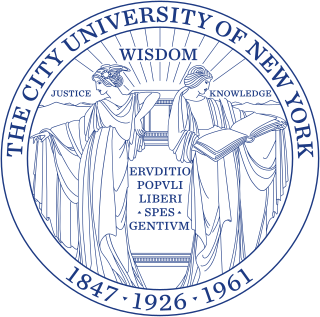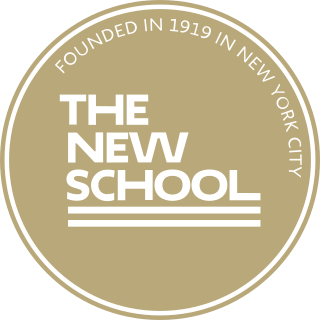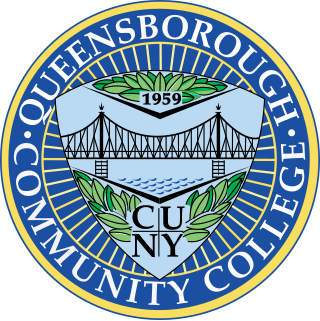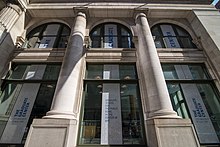
The City University of New York is the public university system of New York City. It is the largest urban university system in the United States, comprising 25 campuses: eleven senior colleges, seven community colleges, and seven professional institutions. While its constituent colleges date back as far as 1847, CUNY was established in 1961. The university enrolls more than 275,000 students and counts thirteen Nobel Prize winners and twenty-four MacArthur Fellows among its alumni.

Hunter College is a public university in New York City. It is one of the constituent colleges of the City University of New York and offers studies in more than one hundred undergraduate and postgraduate fields across five schools. It also administers Hunter College High School and Hunter College Elementary School.

The John Jay College of Criminal Justice is a public college focused on criminal justice and located in New York City. It is a senior college of the City University of New York (CUNY). John Jay was founded as the only liberal arts college with a criminal justice and forensic focus in the United States.

Queens College (QC) is a public college in the Queens borough of New York City. It is part of the City University of New York system. Its 80-acre campus is primarily located in Flushing, Queens. It has a student body representing more than 170 countries.

The State University of New York at Albany, commonly referred to as the University at Albany, UAlbany or SUNY Albany, is a public research university with campuses in Albany, Rensselaer, and Guilderland, New York. Founded in 1844, it is one of four "university centers" of the State University of New York (SUNY) system.

Baruch College is a public college in New York City. It is a constituent college of the City University of New York system. Named for financier and statesman Bernard M. Baruch, the college operates undergraduate and postgraduate programs through the Zicklin School of Business, the Weissman School of Arts and Sciences, and the Marxe School of Public and International Affairs.

Lehman College is a public college in the Bronx borough of New York City. Founded in 1931 as the Bronx campus of Hunter College, the school became an independent college within CUNY in September 1967. The college is named after Herbert H. Lehman, a former New York governor, United States senator, philanthropist, and the son of Lehman Brothers co-founder Mayer Lehman. It is a senior college of the City University of New York (CUNY) with more than 90 undergraduate and graduate degree programs and specializations.
Jewish studies is an academic discipline centered on the study of Jews and Judaism. Jewish studies is interdisciplinary and combines aspects of history, Middle Eastern studies, Asian studies, Oriental studies, religious studies, archeology, sociology, languages, political science, area studies, women's studies, and ethnic studies. Jewish studies as a distinct field is mainly present at colleges and universities in North America.

York College is a public senior college in Jamaica, Queens, New York City. It is a senior college in the City University of New York (CUNY) system. Founded in 1966, York was the first senior college founded under the newly formed CUNY system, which united several previously independent public colleges into a single public university system in 1961. The college is a member-school of Thurgood Marshall College Fund. The college enrolls more than 8,000 students. 35% of undergraduate students graduate within six years.

The New School is a private research university in New York City. It was founded in 1919 as The New School for Social Research with an original mission dedicated to academic freedom and intellectual inquiry and a home for progressive thinkers. Since then, the school has grown to house five divisions within the university. These include the Parsons School of Design, the Eugene Lang College of Liberal Arts, the College of Performing Arts, The New School for Social Research, and the Schools of Public Engagement.
The Master of Philosophy is a postgraduate degree. An MPhil may be awarded to postgraduate students after completing taught coursework and one to two years of original research, which may also serve as a provisional enrolment for a PhD programme.

Queensborough Community College (QCC) is a community college in Bayside, Queens, New York. One of seven community colleges within the City University of New York (CUNY) system, Queensborough enrolls more than 12,000 students and more than 770 Instructional Faculty.

The City College of the City University of New York is a public research university within the City University of New York (CUNY) system in New York City. Founded in 1847, City College was the first free public institution of higher education in the United States. It is the oldest of CUNY's 25 institutions of higher learning and is considered its flagship college.
The CUNY Graduate School of Public Health & Health Policy is a public American research and professional college within the borders of City University of New York (CUNY) system of colleges. The school is situated at 55 West 125th Street in Manhattan. CUNY SPH offers doctoral programs, master's programs, several certificates, and faculty memberships in many of CUNY's research centers and institutes. A core roster of over 50 full-time faculty is supplemented by additional faculty members drawn from throughout CUNY.
The New York University Graduate School of Arts and Science (GSAS) is a school within New York University (NYU) founded in 1886 by Henry Mitchell MacCracken, establishing NYU as the second academic institution in the United States to grant Ph.D. degrees on academic performance and examination. The School is housed in the Silver Center, several departments have their own buildings and houses around Washington Square. The graduate program at Courant Institute of Mathematical Sciences, although run independently, is formally associated with the graduate school.

The Leon Levy Foundation, based in New York, is a private philanthropic foundation, created in 2004 from the estate of Leon Levy, a Wall Street investor and philanthropist, who died in 2003 aged 77.
Andrea Alù is an Italian American scientist and engineer, currently Einstein Professor of Physics at The City University of New York Graduate Center. He is known for his contributions to the fields of optics, photonics, plasmonics, and acoustics, most notably in the context of metamaterials and metasurfaces. He has co-authored over 650 journal papers and 35 book chapters, and he holds 11 U.S. patents.
Leith Patricia Mullings was a Jamaican-born author, anthropologist and professor. She was president of the American Anthropological Association from 2011–2013, and was a Distinguished Professor of Anthropology at the Graduate Center of the City University of New York. Mullings was involved in organizing for progressive social justice, racial equality and economic justice as one of the founding members of the Black Radical Congress and in her role as President of the AAA. Under her leadership, the American Anthropological Association took up the issue of academic labor rights.
Gail Smith is a professor of Classics at Brooklyn College, City University of New York.
Steven M. Cahn is an American philosopher and academic administrator who served as Provost and Acting President of the Graduate Center of the City University of New York.















